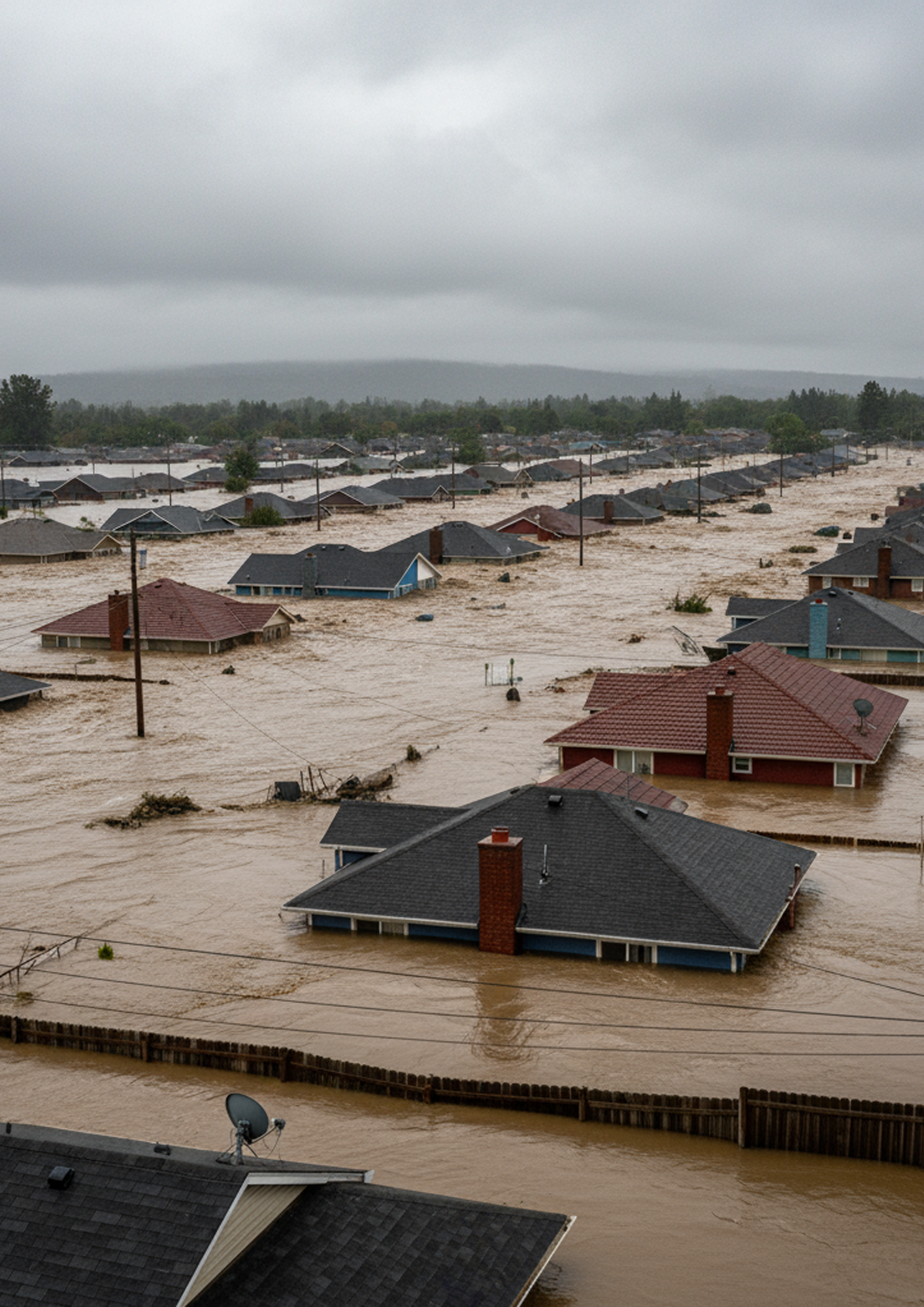Flood

Flooding is the most frequent and costly natural disaster worldwide, affecting more people annually than any other natural hazard. It accounts for over 40% of all natural disasters recorded each year and causes extensive damage to infrastructure, livelihoods, and ecosystems. In recent decades, the frequency, intensity, and socio-economic impacts of floods have increased significantly. This growing trend is largely driven by a combination of climate change, rapid urbanization, and unsustainable land-use practices.
According to the World Bank, global economic losses from flooding now average over $60 billion USD per year. Between 2000 and 2023, floods affected more than 1.6 billion people worldwide. Without effective mitigation and adaptation strategies, the impacts of flooding are expected to worsen. The rise in flood risk is not solely due to natural forces. Social and economic factors such as population growth in flood-prone areas, aging infrastructure, and inadequate preparedness also contribute to greater exposure and vulnerability. As the climate continues to change, flood risk will remain a pressing global challenge. Proactive assessment and planning, using modern tools such as satellite remote sensing, risk modeling, and early warning systems are essential to protect communities, reduce losses, and build long-term resilience.
| Pre-event | Post-Event |
|---|---|
 Dubai, United Arab Emirates
Dubai, United Arab Emirates





